Ware Park
A thousand years of history
S Williams
From the Norman Conquest to the 16th century, Ware Park was connected with some of the greatest feudal families of the day. In the Domesday book, it is recorded as being the property of Hugh de Grentmasnil from whose family it passed by marriage to the Earls of Leicester, then to the De Quinceys and then to the Wakes.
In the mid 16th century it was sold to the Fanshawe family and Thomas Fanshawe built himself a new mansion. His son, Henry, was a great gardener and Ware Park became famous for its peaches – so much that King James I ordered grapes and peaches to be sent to him twice a week. The Fanshawes are buried in a vault in St Mary’s Church.
Ware Park today
The Tudor mansion was demolished and rebuilt on or near the same spot in the late 18th century by Thomas Byde, an MP. Unfortunately, we don’t know what the Tudor house looked like. The house standing today is the third incarnation: it was rebuilt again around 1875 in the style of an Italian villa by William Parker, whose family acquired the estate in the 1820s.
“Great crimson waves” – the fire of 1911
In 1911 a fire was discovered in the servants’ quarters and despite the combined efforts of Hertford and Ware fire brigades, the house was completely gutted. A breeze fanned the flames and the roof collapsed as volunteers frantically passed (and threw) clothes, furniture, bedsteads, ornaments and paintings from the windows. A local photographer, Mr Elsden captured the event. At the time it was leased to a Dr Cumberbatch and his family. The damage was estimated to be £10,000, the equivalent of nearly £4m today. The interior was rebuilt not long afterwards in the same style by Mr Parker, a wealthy man whose main seat was in Cumbria.
In 1919, the whole estate was put up for sale. This included Revells Hall in Bengeo, Ware Park Mill and Westmill Farms, brickfields in Ware, cottages, sand and gravel pits, and the 20 bedroomed mansion, totalling 1,130 acres.
The Sanatorium and a new chapter
Hertfordshire County Council was looking for somewhere to build a new TB Sanatorium and Ware Park looked the best option. A site in Willian was earmarked but was deemed too expensive. Until then, Canons in Ware was being used for local sufferers. (Canons became the Roebuck Hotel, now demolished). On 20th June 1920, the council were asked to approve the purchase Ware Park mansion and 112 acres to be used as a sanatorium for 132 patients and the necessary staff for the sum of £25,000. A further sum of £39,000 was required for adapting the buildings and in purchasing some huts for rebuilding at Ware.
Economy, emergency and humanity
There were arguments over the cost of Ware Park but in the end, it was decided that there was no doubt for the necessity of the sanatorium. It was opened in a ceremony by the marchioness of Salisbury on Monday 7th May 1923. The first Matron was Miss M Sutton who was previously employed at Canons, on a salary starting on £140 a year. £4,000 was spent furnishing the building, including: £193 on bedsteads £317 on bedding £500 on x-ray equipment £169 on cooking utensils
TB – a killer disease
The advancement of scientific understanding of tuberculosis, and its contagious nature created the need for institutions to house sufferers. At the time, there were 400 people in the county suffering from TB. Until antibiotics were discovered, patients were given the “fresh air cure” and lots of rest. This included patients sleeping on outdoor verandas and some can just about be seen in postcards of the time.
TB is an infectious disease which usually attacks the lungs and has been around since antiquity. Over the years it was also called consumption, wasting disease, scrofula, the White Plague, King’s Disease and many other names. It was not until the 1940s with the development of the antibiotic streptomycin that effective treatment and cure became possible. Although widely eradicated in Britain, there are still a few thousand people with the disease but hundreds of thousands more around the world, mainly in poorer countries.
World War II
On 24th September 1940, a parachute mine fell just over 100 metres from the sanatorium. It became entangled in a tree and failed to explode. The patients were evacuated while the mine was made safe by the Royal navy. Someone suggested that if the mine was displayed in the Priory grounds, it could be used as a showpiece to raise money for the “Ware Boys at The Front” fund so it was taken there by council workmen.
Ticking bomb…
It remained there for 5 days until a passing serviceman said it had not been fully diffused. This caused a panic and it was quickly moved to Brazier’s gravel pit in nearby Watton Road (where the Vicarage estate now stands). Despite its proximity to houses, the mine was exploded on 30th September and a large crowd gathered on Widbury Hill to watch. The explosion caused considerable damage; one house was totally destroyed and three more had to be demolished. Several houses in Watton Road lost their roofs and 300 more had varying degrees of damage. It turned out that the mine had been part of a raid which had killed three people in Hertford.
Sanatorium to hospital
By the 1960s, the hospital catered for all chest and respiratory complaints and had around 150 patients and 50 staff. The mansion was used for staff quarters and offices which included kitchens for the hospital, dining and recreation rooms and other facilities. Essentially, it was much the same as when it was a private house.
Faded grandeur and closure
Age and neglect began to take its toll and the building was beginning to crumble. Parts of masonry had to be removed as they were in a dangerous condition and the hospital was no longer self-sufficient. It struggled on until the early 1970s when, against much criticism, it closed by the Regional Health Authority. Unfortunately, the records have not survived.
A new lease of life
In 1980, the estate was sold for £290,000 at an auction at the Canons Hotel in Ware. The buyer was not a local man who (according to the auctioneers) had no firm plans for the park. The lot included the mansion house itself and surrounding buildings (including the hospital wards) office, walled gardens, 94 acres of parkland and extensive woodlands. Later on, the house was divided into luxury apartments.
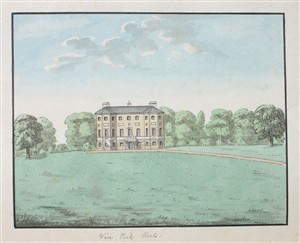
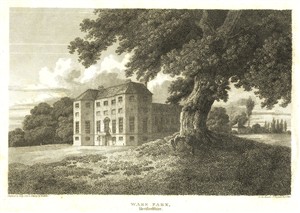
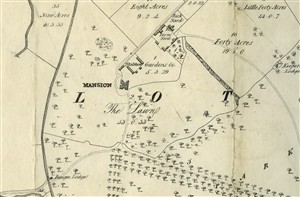
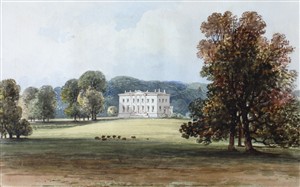
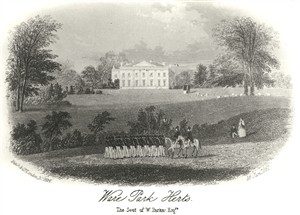
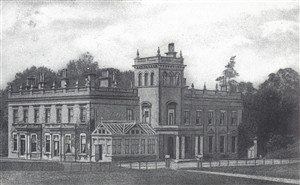
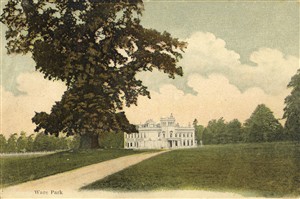
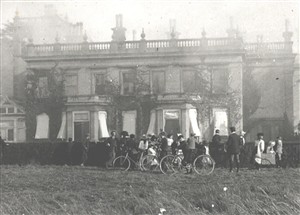
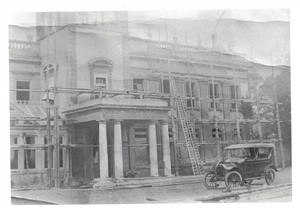
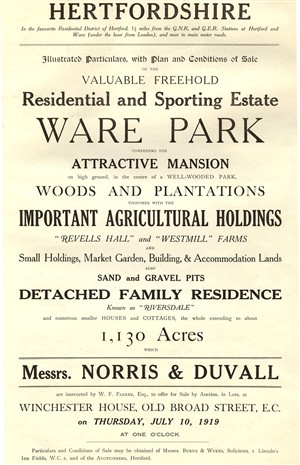
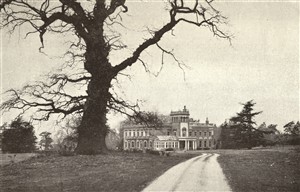
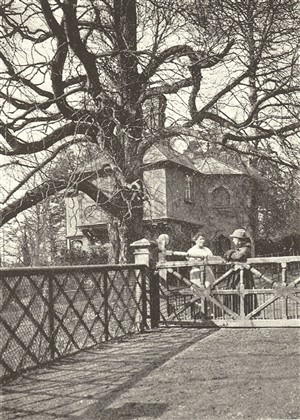

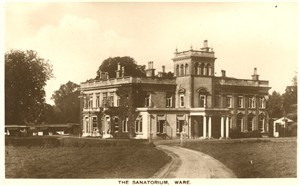
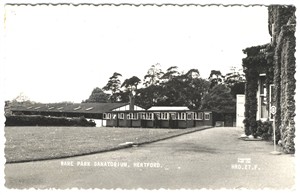
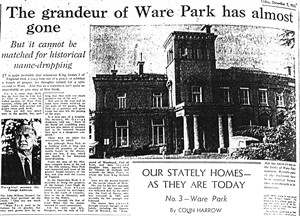
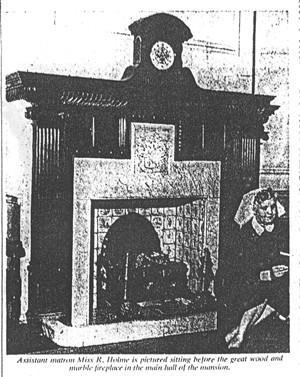
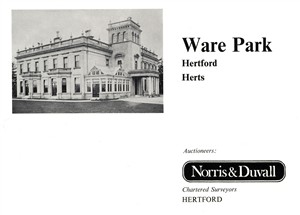
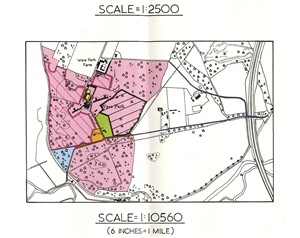
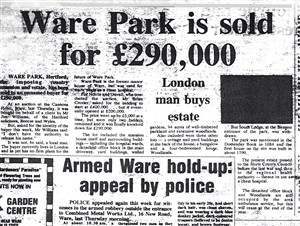
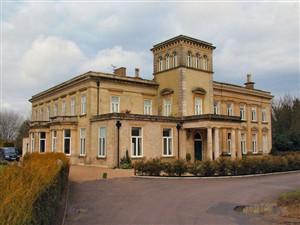


Add your comment about this page
My Grandad was a patient at Ware Park before it was closed,but he was also one of the residents of Watton Road that suffered considerable damage to their house when the parachute mine was exploded at the gravel pit.
My ggg-grandmother, Eleanora Peacock Byde, was descended from Sir Thomas Byde who bought Ware Park from the Fanshawes in 1668. She was born there in 1809, when the Bydes still owned the property. The Bydes were a famous London and Hertford family. Sir Thomas’ father, John Byde, was Master of London’s Brewers Company and Sheriff of London and started one of London’s best known breweries at the Bell Inn in Shoreditch in 1625. The Bydes and their cousins the Plumers, served as Members of Parliament for their county for over 100 years from 1673 to 1776.
My Great Grandfather`s brother, Dr. A E Cumberbatch was the doctor mentioned above at the time of the fire. He married a lady from a very wealthy family. This was their country house, he is there in 1890 (Kelly`s Directory) and at least to 1911. They also had a town house at 80 Portland Place in London. Later he took Great Sarratt Hall, Herts, where he died.
despues de leer algunos comentarios sobre el hospital tengo gratos recuerdos de la epoca que trabaje en el año 1971 donde trabajaba en la limpieza pues fui emigrante recuerdo las ardillas como los pacientes les daban de comer el equipo de enfermeras fenomenal un beso para todos agur
After reading some comments about the hospital I have fond memories of the time I worked in 1971. I worked in cleaning as I was a migrant. I remember the squirrels because patients used to feed them. The nursing team were phenomenal. Sending a kiss to everyone.
I applied for a job at Ware Park Sanatorium approximately 1951/52 as trainee cook met my future husband who Mr Cole had warned me to keep away from him ,it’s now 2020 we were married for 65 years and together for 68 years had 5 children He Oskar passed away October this year 2020 I often think of Ware Park with very fond memories.
I run with my dog in the woods nearby and not originally being from the area always pass the sign which still is there at the bottom of the woods for Ware Park hospital. I was intrigued and wanted to find out a bit more. Really interesting article and comments.
I worked at Ware Park Hospital in the early 1960 as Secretary to then Hospital Secretary Jim Cole. The wild daffodils which covered the field behind the hut where we worked brought a lot of pleasure to staff and patients alike. It was at Ware Park that I first met my dear friend Joy John (now in her 96th year) who was Secretary to Dr Pines. Matron Beales ruled with a rod of iron and Pop Rumsey (a very elderly gentleman) was the telephone operator. Dennis Hammond was the Occupational Therapist and Chef Sando kept us all well fed. Does anyone remember these people?
In 1891 an ancestor of mine, Alfred Skeggs, married Jane Lindon (Lyndon) of Ware Park. There is also a family link with William Parker who rebuilt Ware Park in 1875. Do either of these names ring any bells? Does anyone have any additional information, particularly about Jane Lindon / Lyndon?
Bought a flat here 1985 when changed from the hospital. It’s a beautiful place to be and I also maintain the gardens lucky me
I was born and baptised there. I was born December 1969
I worked on the farm next door early 1980s, the whole place was deralict, spent many an hour wondering around admiring the place, there was a massive water tank on the front lawn, which in the spring was a mass of daffodils. V moving spirt of place, majestic lime trees in the woods, it was a amazing place to live and work
The history of Ware Park is extremely interesting. I worked in the Pathology Labs: @ Hertford Hospital during the mid 1950s. Each Monday two of us went up to the Sanatorium to collect the Patients’ sputum samples. Back at the lab: we examined then under the microscopes etc and it was amazing to see the gradual improvement in the bacteria. Many of the Patients were seated outside under the corrugated iron verandah in the “fresh air”, Those were the days.
My husband and I moved to a house behind Ware Park Manor House in 1995. On digging out a border in the garden I came across large pieces of broken sanitary ware, blue asbestos etc. I now realise, having seen the photograph of the sanatorium huts, that they were built in what is now my garden.
In the late 1970’s we disovered a stone coffin which I think was taken to hertford museum. The grotto and walled garden were great places to explore!
I worked at ware park in the mid 1970’s using some of the villa wards as stores for district nurses and health visitors furniture for their houses. At that stage a roman stone coffin was also found and removed to hertford museum. The tops of the conifer trees were taken to be used for Christmas trees at East herts hospital on gallows hill.
I worked for the the health service in East herts from 1974 to 1979. We used ware park hospital as offices and the old tb wards for storage of furniture to go into health visitors, district nurses and midwives houses in the community. I also worked at East herts hospital and knew Dr Pines who was a lovely gentle doctor.
i was very interested to read this article. I worked as a medical secretary to Dr Arnold Pines at Ware Park Hospital in the early 70’s. It was a lovely place to work. He was an well known chest physician. One registrar sadly committed suicide.
My father was a patient here in 1955, when Mum was pregnant with my older brother, David. He did not see the baby until David was 18 months old.
Hi Kaye, you could try Ware Town Council who look after the cemetery
This was very interesting for me as I think my grand-father was a T.B. patient there in 1927…..or he may have been at Canons. I wondered if you know or could suggest where patients who died there might have been buried, or maybe they were cremated. A grim question, I know, but one that might help me find my grand-father’s grave for Family History purposes.
There was a children’s home on Bengeo Street in Bengeo House in the 1960’s and 1970’s maybe that was the one you remember?
As far as we know, it was not used as a children’s home – Herts Archives have some records of homes in Hertfordshire, see http://www.hertsdirect.org/hals for more information
Hi I have a question rather than a comment, I wondered if in 1976 aprox was this used as a childrens home ? I was in a childrens home in this area & can’t seem to find anything else
It was very interesting to see to see Ware Park over the years, my mother was a patient in 1943 and died 1945, three children were made motherless aged 2yrs 4yrs and 5yrs. Our ran off so childrens homes were the next step thankyou for enlighten me to its history